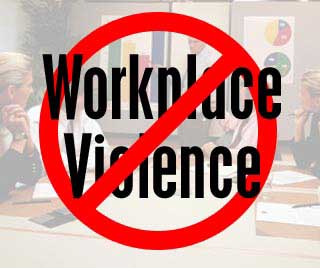 The following are seven useful recommendations to help you prevent and resolve conflicts that could emerge within your organization.
The following are seven useful recommendations to help you prevent and resolve conflicts that could emerge within your organization.
Adopt and promote a prevention and reparation policy against harassment.
- Create a prevention policy involving each level of the organization: management, employees and union representatives. For further assistance, feel free to consult the sample policies found on this website.
- Make sure information about the new policy is widely distributed, that all employees know the policy and encourage everyone to make it their own.
- Put a system in place to record all acts of violence by creating, for example, an Event Report Form.
- Set up procedures to handle complaints impartially, confidentially and quickly. These should include measures to prevent any recurrence of harassment and other types of workplace violence. It is critical to ensure that the victim feels safe against retaliation and has the right, if needed, to be represented when interviewed by an independent and qualified investigator. Keep in mind that, in this case, lodging a formal complaint is not always the best solution since it often involves lengthy delays.
- And finally, establish measures to support the victims and the alleged perpetrators.
Establish clear codes of conduct.
- Define and communicate a clear code of conduct like ‘Zero-tolerance’ with respect to moral harassment and other types of workplace violence.
- Make sure all employees know your organization’s code of conduct. These measures should reflect your organization’s commitment to preventing and responding to external acts of violence.
- Try to reduce and even eliminate behaviour that contravenes your code of conduct by exercising dissuasion and enforcing sanctions.
Organize awareness and training sessions.
- Take time to organize and provide access to awareness and training sessions on the prevention of workplace violence.
- Open the necessary lines of communication to achieve your prevention objectives.
Do not allow conflicts to escalate into harassment or acts of violence.
- Monitor the training of work teams. Working in teams highlights interpersonal relations and may give rise to some situations that could cause tension among people.
- Deal with conflicts swiftly, and from the moment they begin. Harassment and violence stem from unresolved conflicts that fester. They can degenerate and turn the workplace into a hostile environment and create negative occurrences that are violent and costly.
Set up effective lines of communication.
- Open effective lines of communication, because aggressors thrive on the silence of victims and witnesses. Communication is a key factor in the well-being of employees.
- Promote communication and regular meetings of your work teams. Strong lines of communication will not only rally employees against violence, they also reduce the risk of workplace violence by defusing tensions and clarifying situations and misunderstandings.
Pay special attention to the quality of relationships among members of a work team.
- Ensure that work is meaningful for each worker.
- Manage work teams to help prevent and resolve violent situations.
Encourage the acceptance of individual differences.
- Communicate the idea that the strength of a team resides in individual differences (We need each other to make a winning team. The “differences” in each team member makes the strength of the team and enhances the team’s performance.)
- Where possible, plan social or training activities that help team members get to know each other and discover each other’s strengths and weaknesses, from a standpoint of openness to such differences and of acceptance of each team member’s willingness to improve interpersonal relations.
via Basic recommendations for preventing violence in the workplace.




